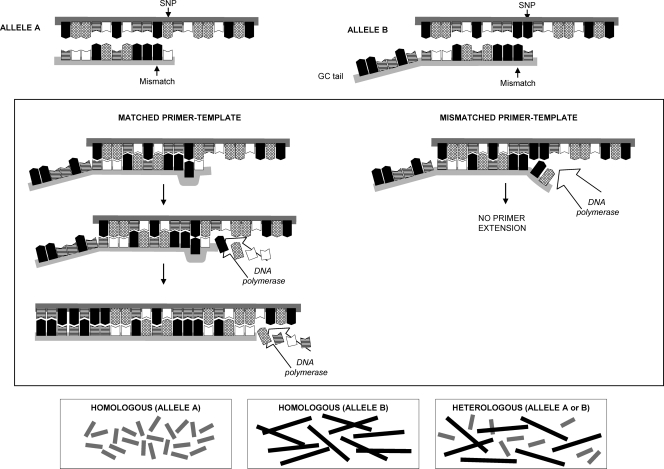Fig. 1.
Melt-MAMA PCR principle. Two allele-specific primers were designed in such way that the last position at the 3′ end matches the SNP of interest, and therefore, if the SNP is not complementary, the DNA polymerase fails to extend the primers, preventing the synthesis of the nascent DNA strand. Mismatches purposely incorporated on the 3′ end of the MAMA primer improve allele discrimination by further destabilizing the nucleotide base pairing and avoiding amplification of the undesired allele. One of the allele-specific primers also differs at the 5′ end, where a GC tail was incorporated in order to increase the melting temperature of the corresponding amplicon to facilitate allele identification. Measurement of fluorescence (SYBR green) allows amplicon identification and allele discrimination by MC analysis.

